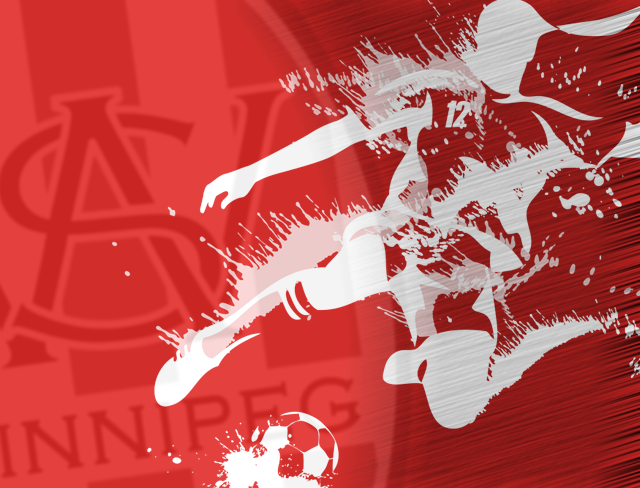Having writing a blog for a while, being away a little long too long but my motivation for, this subject concerned me from some time so here it is.
This is the first of my two-part analysis of coaching in youth soccer as it relates to player motivation and player retention in our game.
Part One will consider the factors that lead to youth players leaving the game.
Part Two will offer coaching concepts and strategies that will motivate players to remain in the game, whether it be in a pursuit of excellence, or simply as a recreational activity.
I don’t think I’m alone when I say that we need to change how our coaches interact with our youth athletes. A coach’s concern regarding a soccer match is quite different than a player’s or a fan’s. A coach observes the psychological indicators of success or failure in sport. Coaches are interested in a player’s perception of the game, their emotion on the ground, how they coordinate their attention, how they adjust their physical and visual intensity in an effective way, what motivates them, if they show distracted attention, and especially what attitude they manifest on the ground.
Coaches are interested in player’s level of psychological training for the game and how that training can be used to predict success or competitive failure. All Coaches must be seeing the same thing as I am. Together, we watch a player step onto the pitch and the lights go out… the joy and passion for the game withers away as creativity drops, and players become terrified of making mistakes.
Why Players Quit Soccer?
The “light” in a player’s eyes often goes out once they reach the competitive level. What I mean is that a player’s love for the game, which is present up to ages 10 or 11, is somehow lost. They are “pumped” to play the game, then something happens. By the time players are into the third or fourth year of competitive play, around 16 years old, they lose their enthusiasm. They go from excitement about playing to apathy or outright resentment.
How do we produce a thriving life-long soccer culture that doesn’t have this problem?
What NOT to Do: The Toxic Habit of Rewards
Let’s start with an idea about what not to do. Here is the reason that I think the “light goes out”. ELITE players playing soccer are attracted by the opportunities that soccer can offer and not by the so “called love of the game”. We have a poisonous habit in soccer that I call it our toxic habit.
An interesting experiment illustrates the toxic habit that can kill the love of soccer. The experiment was carried out with a group of children passionate about the drawing. They spent two or three hours drawing whatever they were inspired to create. At one point, a psychologist comes in and offers 100 euros for each drawing. The cheerful children accepted, and said, “What a good thing, 100 euros is more than nothing, and I like to draw anyway.” So far, everything is perfect, the children have received an extra gift beyond that of investing in their passion for drawing.
The next day, the psychologist offers the following challenge before starting work: “I have only 10 euros to offer for your board – who wants to draw something beautiful?” This time, the children considered the offer intensely, and rationalized the following: “10 euros is less than 100, but more than nothing, and anyway I like to draw”. As you see, their motivation is still the pleasure of drawing, so they accepted. You would think say that everything is fine, but after only about 20 minutes, the first children raised their hands saying they had finished the drawing and wanted their reward. We can conclude that the first visible effects on their behavior are those related to work ethic, the desire to give everything, to investing in their work with what they have the most – passion and dedication.
On the third day, the psychologist returns to the drawing circle and asks them to draw, but without any rewards: This time the children say that, “I do not like to draw anymore”! We only need two days to destroy a passion by offering positive external rewards.
This is not the only study that points out how the “carrot-and-stick” approach destroys the love of the game. There has been about 30 years of research that says the same things according to a significant researcher in the field and a large review of scientific research point to one clear point: when athletes feel pressured to behave through the use of rewards, it hurts the player in the long run. Relying on rewards is our toxic habit!
I can’t count the number of times when I’ve seen a player on a developmental team be promised a chance to move up to a premier team if he does X or Y, and then the promise is not fulfilled. Rewards don’t help and unfulfilled promises are twice as deadly! Too much focus on money, adoration, and other rewards can distract attention from love of the game. When the promised results are delayed or withdrawn, the athlete loses his passion. Passion is a motivating, intrinsic, long-lasting factor that can be easily destroyed through negative experiences (defeats, quarrels, traumas) or even positive rewards. It’s not working and it hurts players.
Basically, we have to STOP relying on rewards:
- Stop dangling to chance to be part of a “special academy” or program in front of players as a performance incentive.
- Stop making decisions without explaining the rational to players (not parents) – transparency in decision making.
- Stop incentives other than merit-based decisions
- Stop promising more than we can deliver – example: promising the chance to pay professionally here or in Europe when we can’t control selection.
- Stop lying to kids about potential when it may not be there.
The toxic habit is the WAY that players are motivated by coaches and their organizations. It is a big problem when coaches emphasize reward systems when 30 years of research says that it doesn’t help players develop and it degrades the love of the game.
1 Robert Vallerand: “Intrinsic and extrinsic motivation in sport and physical activity: A review and a look at the future.”
2 Bartholomew, K., Ntoumanis, N., Ryan, R., Bosch, J., & Thøgersen‐ Ntoumanis, C.: “Self‐determination
theory and diminished functioning: The role of interpersonal control and psychological need thwarting.”.
3Carpentier, J., & Mageau, G.: “When change‐oriented feedback enhances motivation, well‐being and performance: A look at autonomy‐supportive feedback in sport.”
4 Roberts, G., Treasure, D.., & Conroy, D.: “Understanding the dynamics of motivation in sport and physical activity: An achievement goal interpretation.”
5 Hager & Chatzisarantis: “Causality orientations moderate the undermining effect of rewards on intrinsic motivation”
6 Harrolle & Klay: “Understanding the Role of Motivation in Professional Athletes”.



